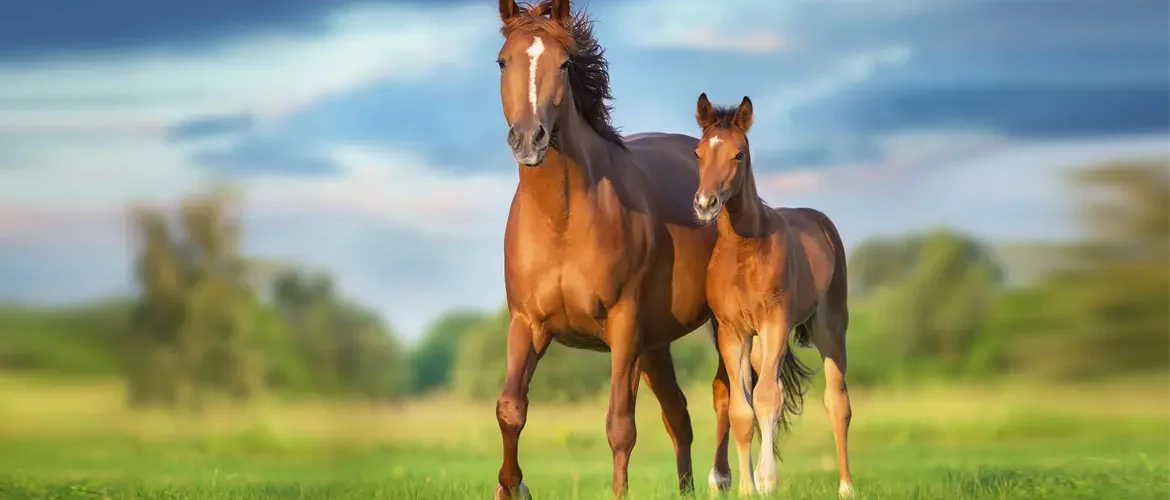Ovohorse laboratories, backed by 20 years of experience in assisted reproduction, enable the application of all techniques for the production of in vitro embryos from donor mares with the best genetics. However, producing the embryos is only the first step. These embryos are then transferred to recipient mares, who play a key role as they will be responsible for carrying the future foals with the desired genetics. Therefore, it is essential that these mares meet a series of requirements.
Embryo transfer is a technique commonly used to obtain offspring from an exceptional mare, either due to her abilities in a particular discipline or sport and a brilliant career, or because she has reproductive or health problems. Thanks to this technique, the risks associated with gestation, birth, and postpartum in donor mares (biological mothers) can be avoided.
There are two types of embryo transfer (ET): flush transfer and ICSI embryos. The first type is naturally generated in the body of donor mares after insemination. These are performed “blindly” because, around day 7, it is still not possible to detect these embryos via ultrasound, requiring the synchronization of several recipient mares. However, with ICSI in vitro embryos, the embryo is already available and can be transferred at the optimal time.
The success of the transfer also depends on the recipient mares; the better their condition, the higher the implantation rate. Additionally, their well-being before, during, and after birth is crucial, as they are responsible for carrying, birthing, and raising the foals.
It is also important for the mare to have a good temperament. If she has a difficult temperament, it could lead to complications during the embryo transfer process and may even pass part of her temperament on to the offspring.
Características de la yegua receptora ideal
- They should be young mares, ideally between 3 and 12 years old.
- They must be in perfect health and physical condition.
- Their size should be similar to that of the donor mare to ensure the foal has enough space to develop and to prevent abnormalities during gestation or delivery.
- In some cases, it will be mandatory for the recipient mares to be of the same breed as the foal to be born, such as in PRE (Pura Raza Española) horses.
- Their estrous cycles should be normal.
- They should not have reproductive issues or abnormalities in the uterus or ovaries.
- It is recommended to perform an endometrial culture to rule out problems like infections.
- They should have foaled at least once to confirm they produce sufficient milk and have good maternal instincts.
- They should have a good temperament, as a difficult nature can complicate not only their management but also that of the foal.
- Choose the best day for the embryo transfer. In the case of ICSI embryos, it is recommended to transfer on day +4 post-ovulation.
- And most importantly: The mare should be as calm as possible, as stress is the enemy of early pregnancies.

